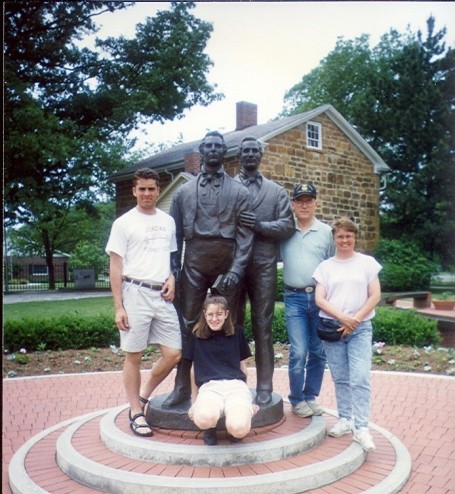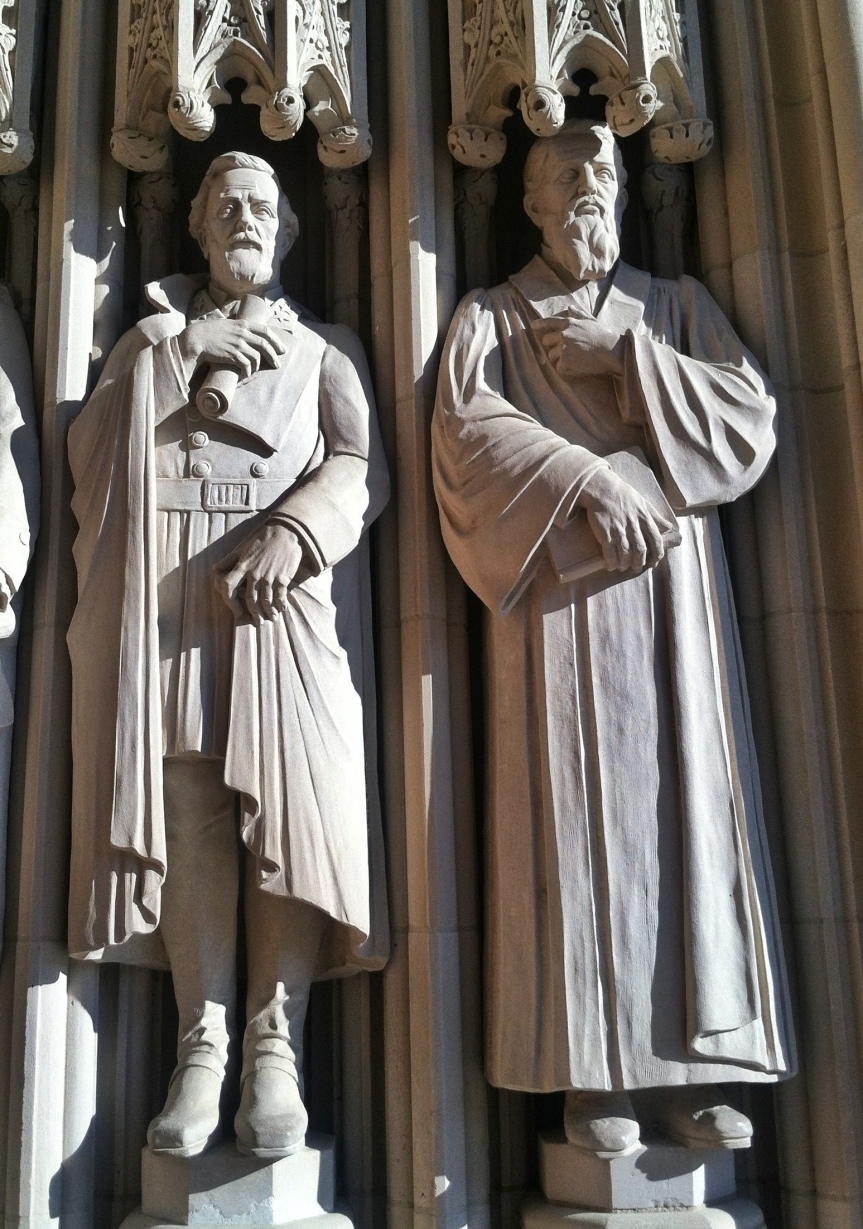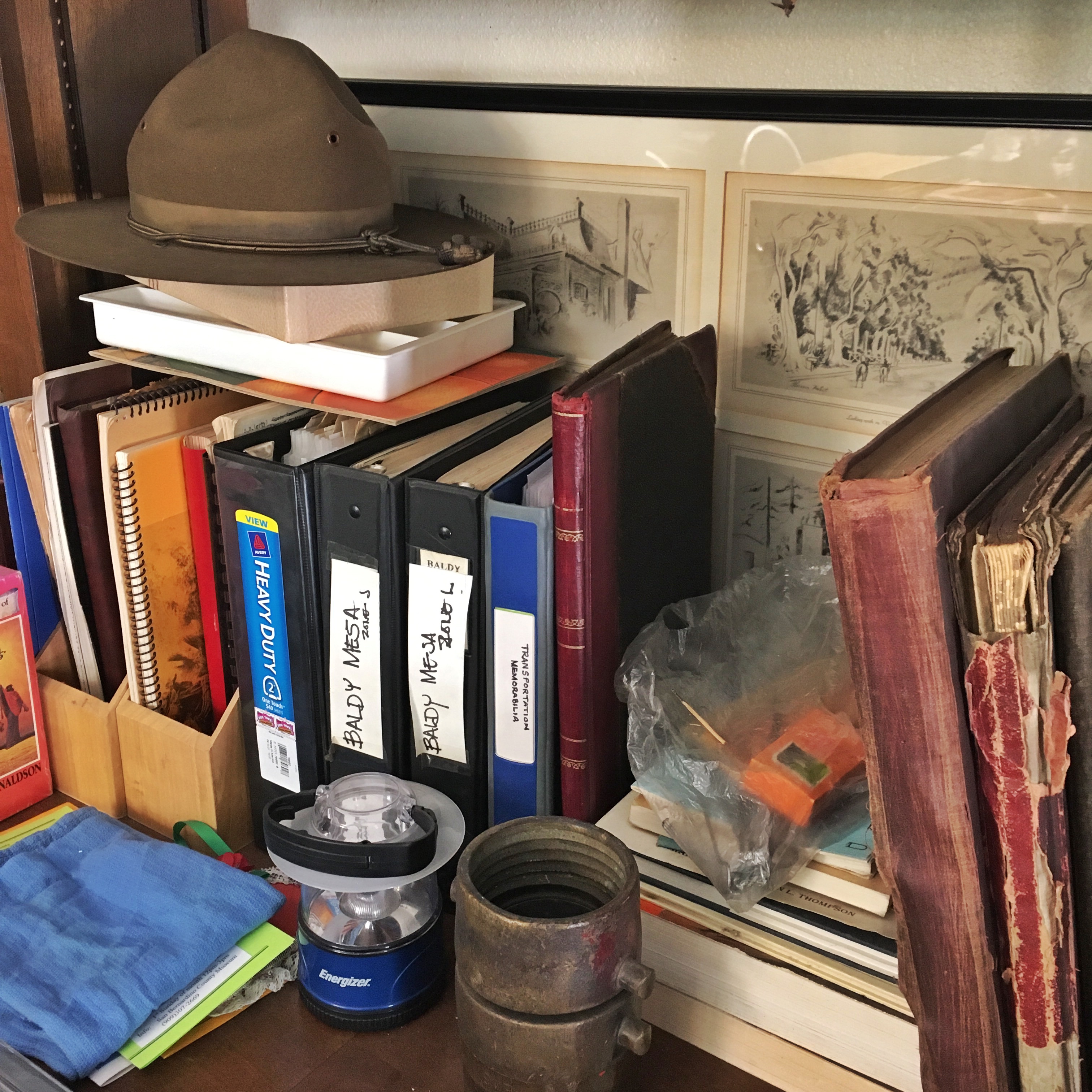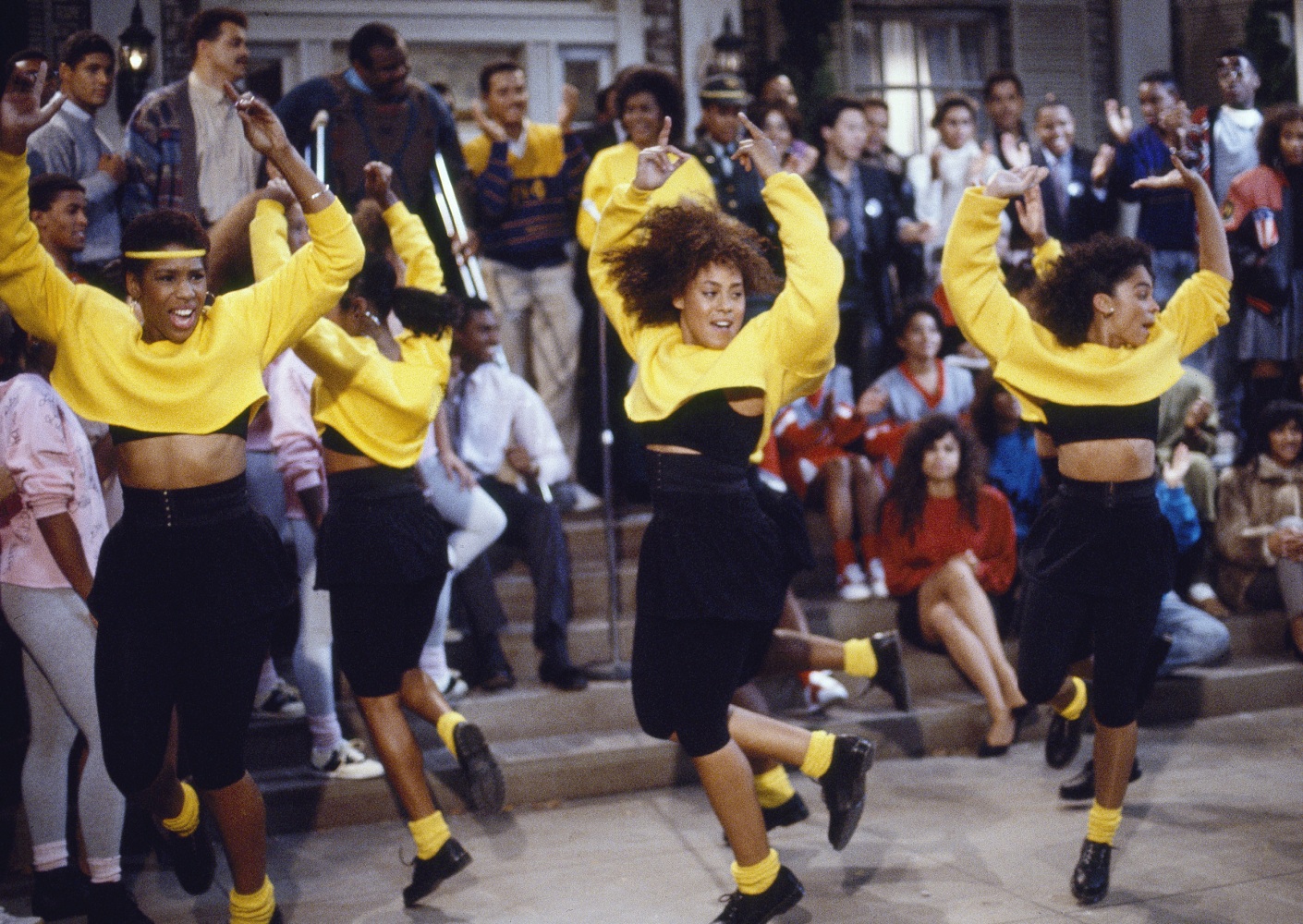Let me state up front that I have indeed, seen Confederate monuments that I feel are appropriate. I admit they exist.
I have seen a lot of statues in a lot of places over the years. While standing in front of them and looking, I have learned that statues are much less about then, than they are about right now.
You can see it when you look at them.
Some are majestic, others are humble. Some mark a spot, others glorify an ideal or occurrence. But what almost all have in common is that they appear to be built to communicate something. They tell those before them something about where they are. They address the viewer and try to make tangible through stone or bronze something the artist, or community, or someone, feels that person standing there right then needs to know.
They communicate. That is their job.
So, to me, they key is in discerning what it is they are saying.
Some spell it right out. Others are more subtle.

I have stood at the feet of a giant Abe Lincoln and considered the “most fearful ordeal”. In that spot I turned around and looked at the marks in the marble spelling “I have a Dream”. Both of those things were put there for me to consider in that moment.
As a Seventeen year old I stood outside a jail in Carthage Illinois where Joseph Smith was murdered. That statue of Joseph and his brother Hyrum, together, in the place where they both died helped me feel something. It was more than a text could provide.
I have read some make similar statements about when they first saw the statue of liberty from the deck of a ship.
I have been to the battle fields of Gettysburg and Antietam. There in those grassy peaceful places I looked up at pillars marking where soldiers stood, fired, and violently died. I would not have experienced those places the same way without the aid of monuments. I am glad they were there.
But I have seen some others too.
We once lived in a charming small town called Greenville. It had an accessible downtown with shops and a square. At one end, the official side with the courthouse, there was this.
Up top was a confederate soldier and down below was this message.
“All lost but by the graves
Where martyred heroes rest
He wins the most who honor saves
Success is not the test
The world shall yet decide
In truth’s clear far off light
That the soldiers
Who wore the gray and died
With Lee were in the right.”
The statue was of no specific person and nothing remarkable in history happened there. I read the inscription and looked over at the official government building and thought, “Wait… Lee was right? How was the Confederacy right? I realized I was standing in a place where those in charge wanted it to be quite clear, to me, that they believed that those who died with Lee were right. Not Grant. Not Lincoln. Lee.
It made me feel I didn’t belong in this place, and that was the point. I am just me and my words are hot air- these words were stone. Charleston is a gorgeous city. The food and architecture are both worth the trip. Colonial era homes line the shore with manicured grass and mossy oaks between their columned front porches and the water. Multiple eras of history happened here and the monuments reflect that. There is a marble plaque explaining that here they hung pirates. There is also a statue of George Washington. But the tallest of all and the grandest, is the one built for confederates.
Charleston is a gorgeous city. The food and architecture are both worth the trip. Colonial era homes line the shore with manicured grass and mossy oaks between their columned front porches and the water. Multiple eras of history happened here and the monuments reflect that. There is a marble plaque explaining that here they hung pirates. There is also a statue of George Washington. But the tallest of all and the grandest, is the one built for confederates.
I know enough to know that they did not use shields or fight naked. I also knew that there was no event that included a Greek Goddess. Yet that is what was built. Here on the spot where America’s bloodiest war’s first shots were fired, the biggest monument is a celebration of the ones who started it.
This was not about history, it was about glory. I found that idea disappointing. On the campus of Yale, right next to a dorm, stands a statue of a young man about to die. Nathan Hale, once a student at Yale, was executed by the British for spying. He is depicted standing tall and proud, not whimpering or afraid. It was meant to inspire a respect for ideals, possibly learned in this place, worth dying to uphold. I was inspired, maybe a tad bit intimidated, and that was the point.
On the campus of Yale, right next to a dorm, stands a statue of a young man about to die. Nathan Hale, once a student at Yale, was executed by the British for spying. He is depicted standing tall and proud, not whimpering or afraid. It was meant to inspire a respect for ideals, possibly learned in this place, worth dying to uphold. I was inspired, maybe a tad bit intimidated, and that was the point. At Boston College, in front of some classrooms, is Saint Ignacius. I am not Catholic but this depiction was contemplative and reached down to me. As if he intended to lift me up. It was both inspiring and inviting. And that was the point.
At Boston College, in front of some classrooms, is Saint Ignacius. I am not Catholic but this depiction was contemplative and reached down to me. As if he intended to lift me up. It was both inspiring and inviting. And that was the point. At the center of Duke’s campus stands a cathedral. It was built in 1930 and its entrance is flanked by statues. Martin Luther, John Wycliffe, and Robert E Lee. No matter my denomination, I understand the religious reverence expected of any figure placed at the front of a church. I also understand what Lee fought for. He did not just own black people as slaves but he led a war to keep doing it. He did not fight that war on campus, or in this church, and by 1930 the war was long over, but standing there in that moment- I understood how the officials here felt about him. And I understood how he felt about black humans. In that moment I knew this place was not meant for me.
At the center of Duke’s campus stands a cathedral. It was built in 1930 and its entrance is flanked by statues. Martin Luther, John Wycliffe, and Robert E Lee. No matter my denomination, I understand the religious reverence expected of any figure placed at the front of a church. I also understand what Lee fought for. He did not just own black people as slaves but he led a war to keep doing it. He did not fight that war on campus, or in this church, and by 1930 the war was long over, but standing there in that moment- I understood how the officials here felt about him. And I understood how he felt about black humans. In that moment I knew this place was not meant for me.
The point.
In looking at the statues we need to consider what they are saying and to whom. We need to know that these figures and plaques make statements that last and have meaning. They are indeed endorsements. what are we collectively endorsing?
I despise the confederate flag like I would a swastika. It has no place in my life. But there was one time, while visiting a graveyard in Greenville, that I saw that flag as okay. There lay buried the remains of men who had died in a war. Those flags marked both who they were and where they are in a way that had meaning. I endorse that.
I also endorse that the ideology of that war, that a whole segment of humanity is inferior, should be laid to rest in those graves with those men and that flag.
So let Mr. Lee come down.






















 My particular stretch of that old road is the kind of no where that filled up with people yet never quite became a place. There isn’t a solid there here.
My particular stretch of that old road is the kind of no where that filled up with people yet never quite became a place. There isn’t a solid there here.








 I hear and read a lot of things about the environment in college, but few of those opinions or descriptions are coming from people who work in college. Or are currently attending college. Sometimes it comes from people who remember college. People in the weeds are talking about the tower.
I hear and read a lot of things about the environment in college, but few of those opinions or descriptions are coming from people who work in college. Or are currently attending college. Sometimes it comes from people who remember college. People in the weeds are talking about the tower.








 Antelope Island is out in the middle of the Great Salt Lake but you can drive there on a causeway. You can see it from the city but not many people go there. Which makes it kind of nice.
Antelope Island is out in the middle of the Great Salt Lake but you can drive there on a causeway. You can see it from the city but not many people go there. Which makes it kind of nice.









 Charleston is a gorgeous city. The food and architecture are both worth the trip. Colonial era homes line the shore with manicured grass and mossy oaks between their columned front porches and the water. Multiple eras of history happened here and the monuments reflect that. There is a marble plaque explaining that here they hung pirates. There is also a statue of George Washington. But the tallest of all and the grandest, is the one built for confederates.
Charleston is a gorgeous city. The food and architecture are both worth the trip. Colonial era homes line the shore with manicured grass and mossy oaks between their columned front porches and the water. Multiple eras of history happened here and the monuments reflect that. There is a marble plaque explaining that here they hung pirates. There is also a statue of George Washington. But the tallest of all and the grandest, is the one built for confederates. On the campus of Yale, right next to a dorm, stands a statue of a young man about to die. Nathan Hale, once a student at Yale, was executed by the British for spying. He is depicted standing tall and proud, not whimpering or afraid. It was meant to inspire a respect for ideals, possibly learned in this place, worth dying to uphold. I was inspired, maybe a tad bit intimidated, and that was the point.
On the campus of Yale, right next to a dorm, stands a statue of a young man about to die. Nathan Hale, once a student at Yale, was executed by the British for spying. He is depicted standing tall and proud, not whimpering or afraid. It was meant to inspire a respect for ideals, possibly learned in this place, worth dying to uphold. I was inspired, maybe a tad bit intimidated, and that was the point. At Boston College, in front of some classrooms, is Saint Ignacius. I am not Catholic but this depiction was contemplative and reached down to me. As if he intended to lift me up. It was both inspiring and inviting. And that was the point.
At Boston College, in front of some classrooms, is Saint Ignacius. I am not Catholic but this depiction was contemplative and reached down to me. As if he intended to lift me up. It was both inspiring and inviting. And that was the point. At the center of Duke’s campus stands a cathedral. It was built in 1930 and its entrance is flanked by statues. Martin Luther, John Wycliffe, and Robert E Lee. No matter my denomination, I understand the religious reverence expected of any figure placed at the front of a church. I also understand what Lee fought for. He did not just own black people as slaves but he led a war to keep doing it. He did not fight that war on campus, or in this church, and by 1930 the war was long over, but standing there in that moment- I understood how the officials here felt about him. And I understood how he felt about black humans. In that moment I knew this place was not meant for me.
At the center of Duke’s campus stands a cathedral. It was built in 1930 and its entrance is flanked by statues. Martin Luther, John Wycliffe, and Robert E Lee. No matter my denomination, I understand the religious reverence expected of any figure placed at the front of a church. I also understand what Lee fought for. He did not just own black people as slaves but he led a war to keep doing it. He did not fight that war on campus, or in this church, and by 1930 the war was long over, but standing there in that moment- I understood how the officials here felt about him. And I understood how he felt about black humans. In that moment I knew this place was not meant for me.